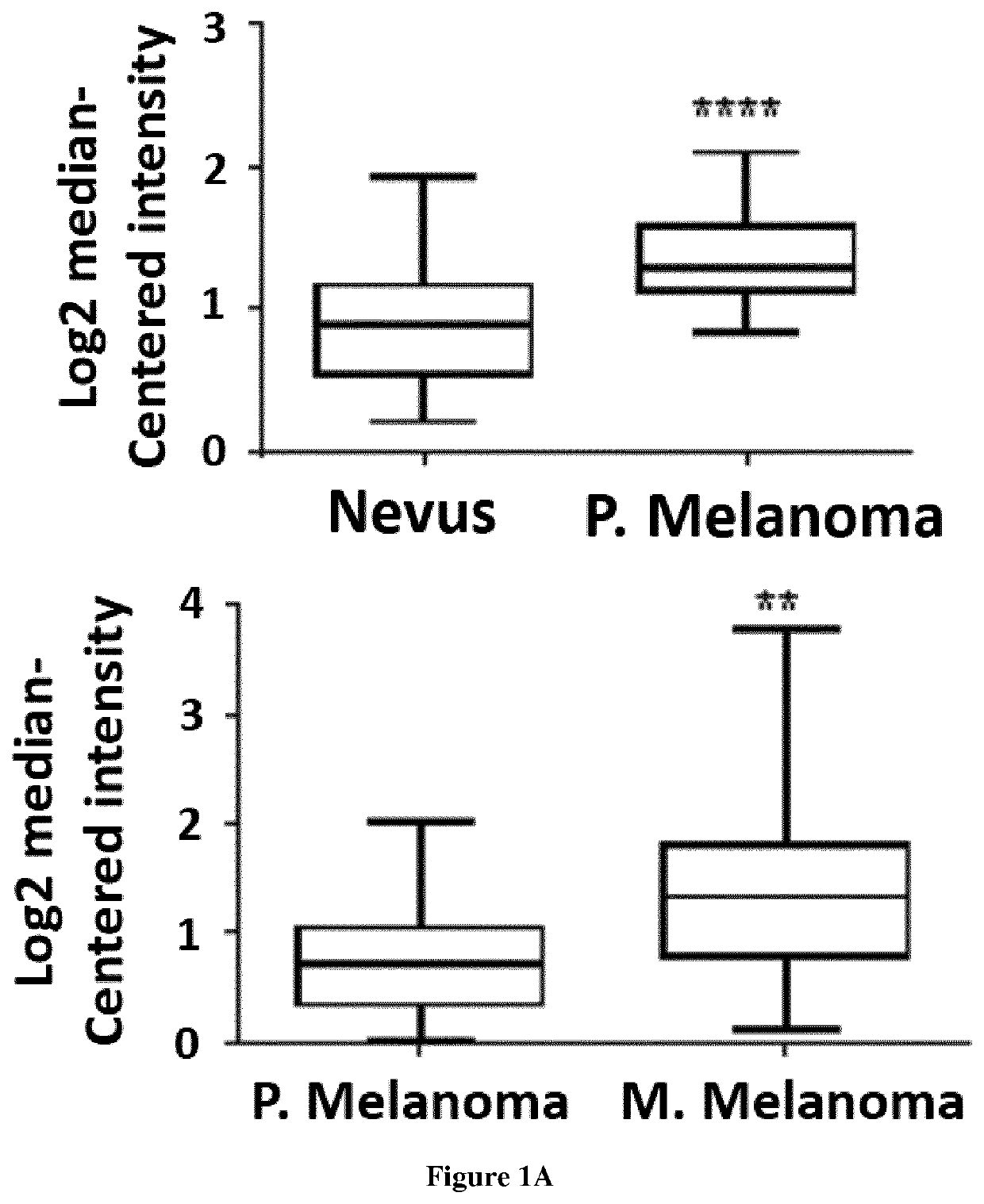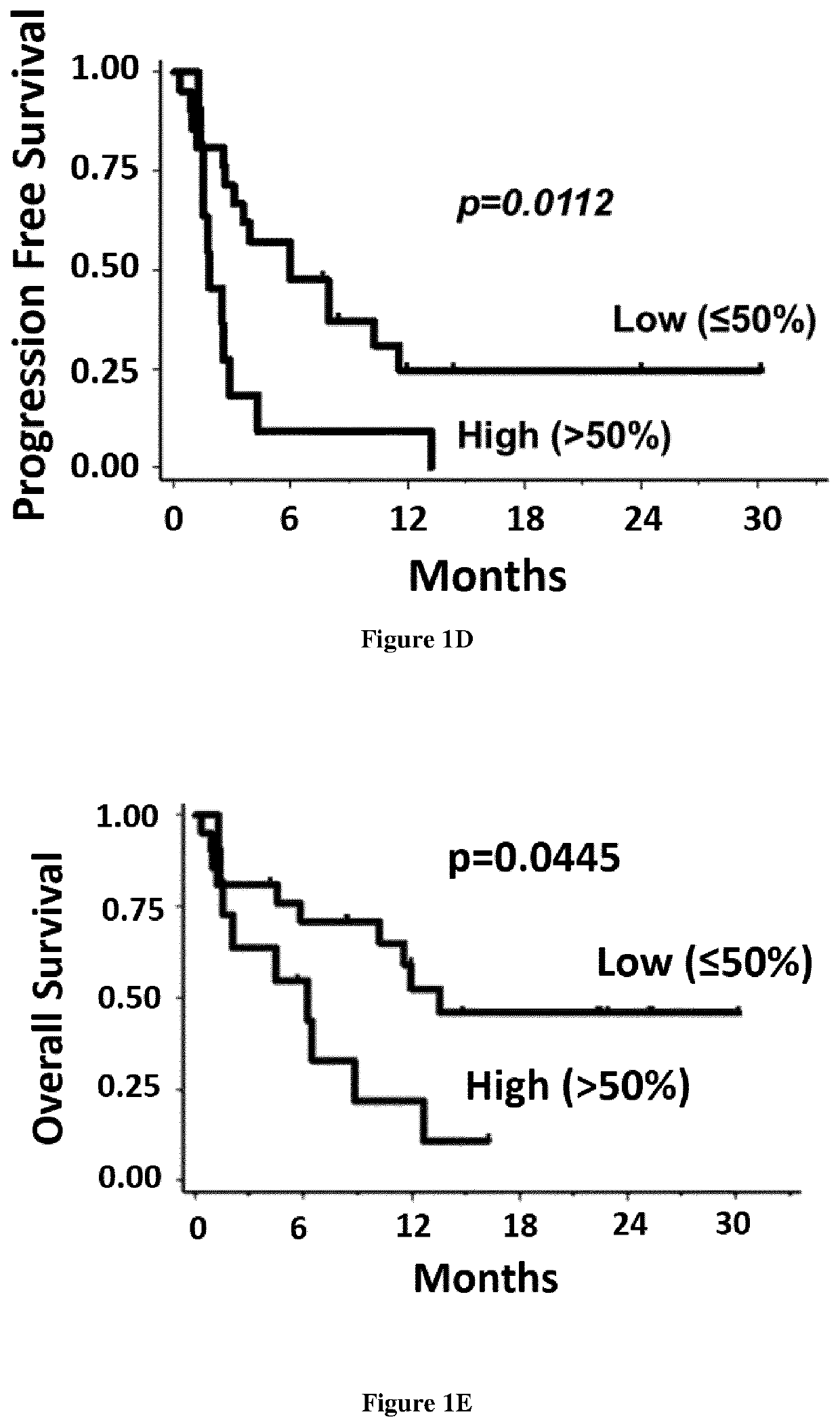Use of sk1 as biomarker for predicting response to immunecheckpoint inhibitors
a technology of immune checkpoint inhibitors and sk1 is applied in the field of methods for predicting the response to immune checkpoint inhibitors, which can solve the problems that the role of sk1 as a biomarker for predicting the response to ici has not yet been documented
- Summary
- Abstract
- Description
- Claims
- Application Information
AI Technical Summary
Benefits of technology
Problems solved by technology
Method used
Image
Examples
example
[0076]Methods
[0077]Patient Cohorts
[0078]SPHK1 expression analysis in human nevi and melanomas was assessed in 2 different cohorts from Oncomine (Talantov Clin Cancer Res. 2005 Oct. 15; 11(20):7234-42; Xu Mol Cancer Res. 2008 May; 6(5):760-9).
[0079]Patient Survival Analyses
[0080]Protocol was approved by “CPP du Sud-Ouest et Outre-Mer IV” (Limoges, France). Informed, signed consents from metastatic melanoma patients were obtained. The major clinicopathologic characteristics and available treatment information of the cohorts are presented in Table B.
[0081]All survival times were calculated from the first day of the first cycle of anti-PD-1 therapy. Progression-free survival and overall survival were defined using the following first-event definitions: either relapse or death from any cause for PFS, and death from any cause for OS. Patients still alive were censored at their date of last follow-up. Comparison between groups (low expression vs high expression) was performed using log-ran...
PUM
| Property | Measurement | Unit |
|---|---|---|
| reduction of function | aaaaa | aaaaa |
| concentrations | aaaaa | aaaaa |
| size | aaaaa | aaaaa |
Abstract
Description
Claims
Application Information
 Login to View More
Login to View More - R&D
- Intellectual Property
- Life Sciences
- Materials
- Tech Scout
- Unparalleled Data Quality
- Higher Quality Content
- 60% Fewer Hallucinations
Browse by: Latest US Patents, China's latest patents, Technical Efficacy Thesaurus, Application Domain, Technology Topic, Popular Technical Reports.
© 2025 PatSnap. All rights reserved.Legal|Privacy policy|Modern Slavery Act Transparency Statement|Sitemap|About US| Contact US: help@patsnap.com



